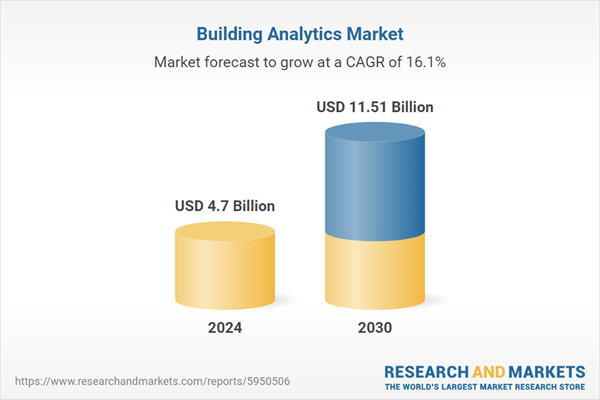Commercial Buildings is the fastest growing segment, North America is the largest market globally
Speak directly to the analyst to clarify any post sales queries you may have.
10% Free customizationThis report comes with 10% free customization, enabling you to add data that meets your specific business needs.
Key Market Drivers
The Global Building Analytics Market is significantly influenced by the increasing demand for energy-efficient buildings and systems, driven by a global imperative to mitigate environmental impact and optimize resource consumption. Building analytics solutions provide critical insights into energy usage patterns, enabling proactive adjustments to heating, ventilation, air conditioning systems, and lighting. This leads to substantial reductions in energy waste and operational costs. According to Siemens Smart Infrastructure, in December 2024, "Siemens Smart Infrastructure Sets Higher Ambitions to Drive Next Level of Value Creation", the business helped customers avoid 44 million tons of CO2 emissions in fiscal year 2024 alone.Key Market Challenges
The high initial implementation cost associated with complex building analytics solutions presents a significant impediment to the growth of the Global Building Analytics Market. This substantial upfront investment often creates a barrier to entry, particularly for smaller entities and those with limited capital expenditure budgets. The integration of advanced sensors, software platforms, and network infrastructure, coupled with the need for specialized installation and configuration, directly contributes to these elevated costs.Key Market Trends
Artificial Intelligence and Machine Learning Integration for Predictive Insights represents a pivotal shift towards proactive building operational control. These advanced capabilities allow systems to anticipate equipment failures, optimize energy consumption based on predicted demand, and adapt autonomously to environmental changes. The industry's commitment is reflected by ASHRAE, a leading industrial association, which featured an "Artificial Intelligence and the Built Environment" track at its 2024 Annual Conference, including sessions on machine learning foundations for professionals. This demonstrates the integration of AI into industry best practices.Key Market Players Profiled:
- Honeywell International Inc
- Siemens AG
- Johnson Controls International plc
- Schneider Electric SE
- C3.ai Inc.
- Planon Group
- IBM Corporation
- Microsoft Corporation
- Accenture Plc
- Oracle Corporation
Report Scope:
In this report, the Global Building Analytics Market has been segmented into the following categories:By Component:
- Software
- Services
By Application:
- Energy Management
- Security Management
- Fault Detection & Monitoring
- Emergency Management
By Deployment Mode:
- On-Premises
- Cloud
By Building Type:
- Residential Buildings
- Commercial Buildings
- Manufacturing Facilities
By Region:
- North America
- Europe
- Asia Pacific
- South America
- Middle East & Africa
Competitive Landscape
Company Profiles: Detailed analysis of the major companies present in the Global Building Analytics Market.Available Customizations:
With the given market data, the publisher offers customizations according to a company's specific needs. The following customization options are available for the report:- Detailed analysis and profiling of additional market players (up to five).
This product will be delivered within 1-3 business days.
Table of Contents
Companies Mentioned
- Honeywell International Inc
- Siemens AG
- Johnson Controls International plc
- Schneider Electric SE
- C3.ai Inc.
- Planon Group
- IBM Corporation
- Microsoft Corporation
- Accenture Plc
- Oracle Corporation
Table Information
| Report Attribute | Details |
|---|---|
| No. of Pages | 181 |
| Published | November 2025 |
| Forecast Period | 2024 - 2030 |
| Estimated Market Value ( USD | $ 4.7 Billion |
| Forecasted Market Value ( USD | $ 11.51 Billion |
| Compound Annual Growth Rate | 16.1% |
| Regions Covered | Global |
| No. of Companies Mentioned | 10 |









